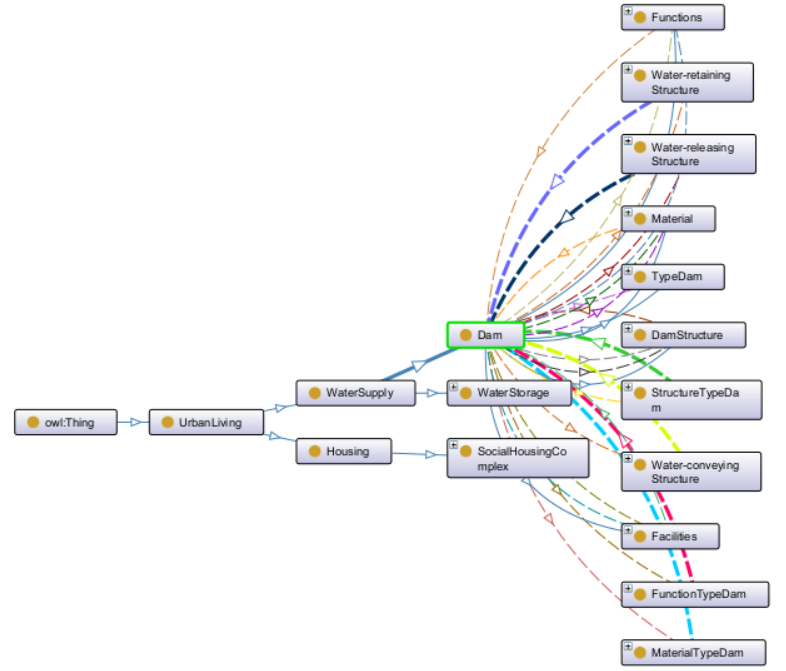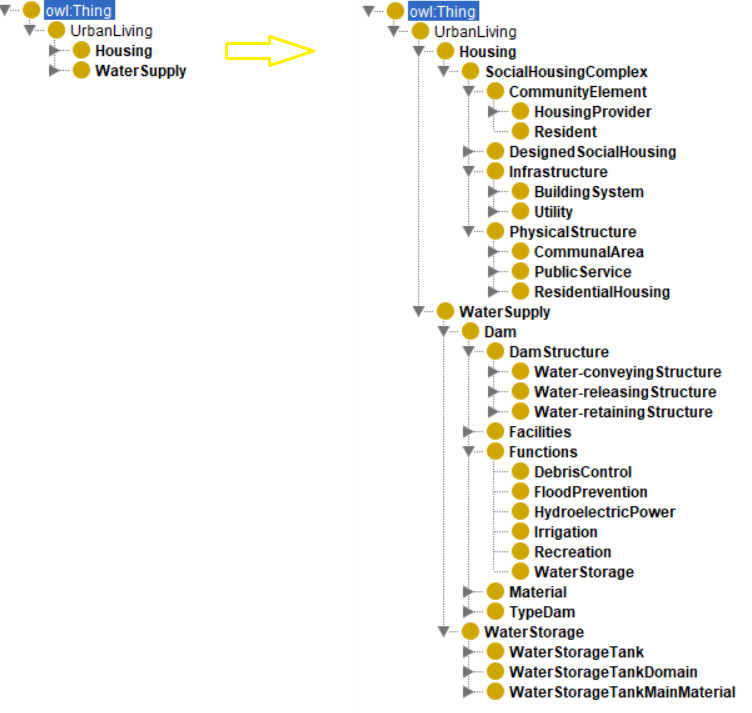Engineering Challenge
This combined ontology integrates four individual subsystems: a Multi-story Building, an Elevated Water Storage Tank, a HVAC System, and a Dam, within the context of Urban living water management.
Integrating ontologies can be a challenging task. In this assignment, we created an ontology specifically for urban water management. Initially, the social housing multi-story building and the residential multi-story building were merged due to their similarities. Given our focus on analyzing water supply for a city, segregating these two seemed counterintuitive.
The HVAC system was incorporated as a child class under building infrastructure supplies. These three systems were then grouped under a parent class named Housing, situated at the same level as the urban water supply system. This water supply system includes a Dam as well as an Elevated Water Tank responsible for storing the water before distribution.
Ontology Development
Purpose:
To create a framework for integrating various components of urban water supply systems within the context of sustainable urban living. This ontology captures the relationships, properties, and constraints associated with these components, considering their roles in water management, energy efficiency, and social welfare within urban environments.
Scope:
The scope is to integrate water supply systems with other urban infrastructure components within the context of sustainable urban living. This ontology aims to facilitate the analysis of the relationships between different elements such as dam infrastructure, elevated water storage tanks, multi-story buildings and HVAC systems.
Intended Users:
Urban planners, architects, engineers, policymakers, researchers, and other stakeholders involved in the design, development, and management of urban infrastructure systems.
Intended Use:
Be a knowledge representation tool to support various applications within the domain of sustainable urban water management as well as facilitate the integration and analysis of water supply systems with other urban infrastructure components.
The ontology can also serve as a basis for developing decision support systems, simulation models, and data-driven analytics tools aimed at optimizing resource utilization, enhancing environmental sustainability, and promoting resilience in urban water supply systems.
Figure 1: Class hierarchy of the combined urban living ontology.
 Figure 2: OntoGraf graph of the combined urban living ontology.
Figure 2: OntoGraf graph of the combined urban living ontology.
Download the combined ontology here (Right click → Save link as…)
